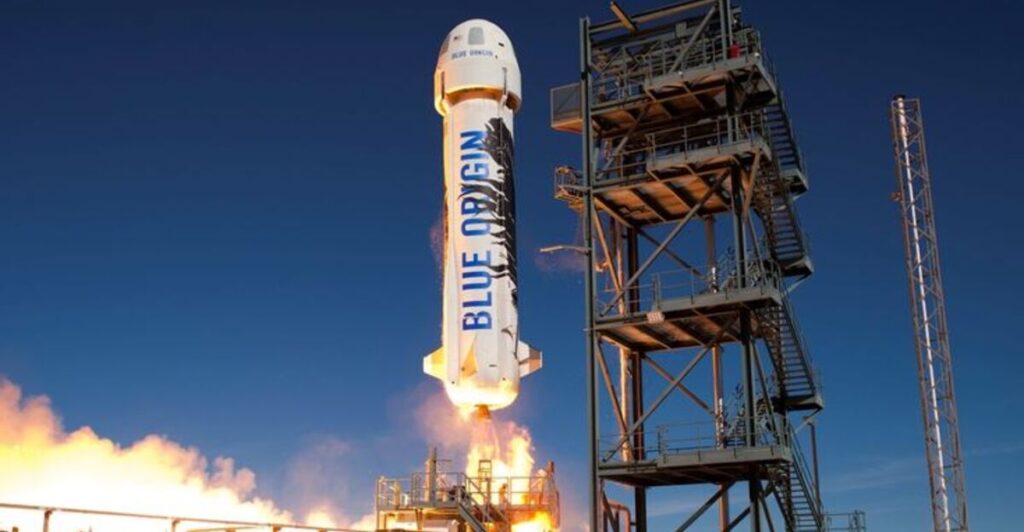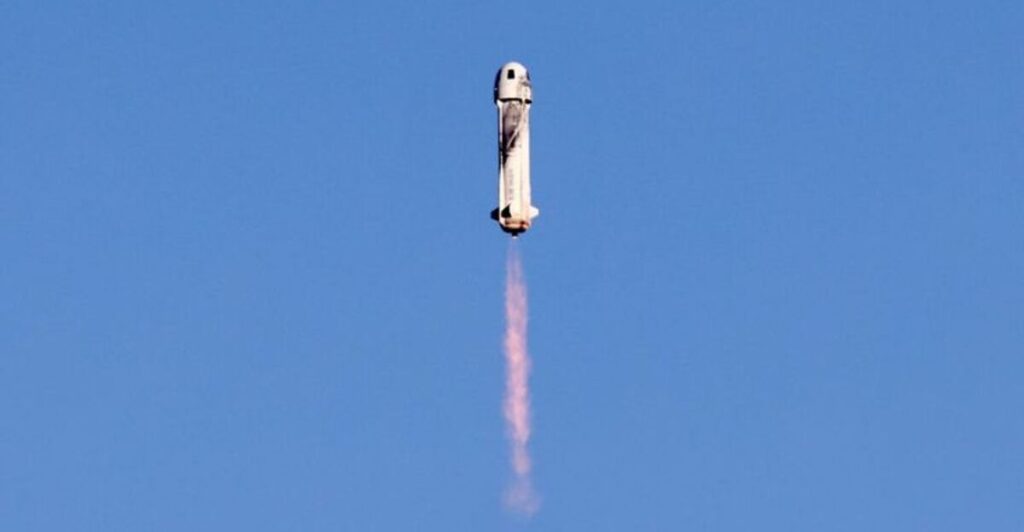
Blue Origin’s celebrity spaceflights, particularly featuring high-profile figures like pop star Katy Perry, have sparked a heated debate about the environmental and social implications of space tourism. It symbolizes a dangerous paradox: promoting climate action while participating in ultra-high-carbon behavior.
These flights use rockets that emit nitrogen oxides and stratospheric water vapor, which trap heat more effectively than ground-level emissions. Even beyond the environmental scars they leave, they normalize unsustainable indulgence in luxury, undermining collective climate efforts.
Studies have shown that public figures’ actions have a disproportionate impact on societal norms, making such displays particularly damaging. The spectacle of space tourism clashes with urgent decarbonization needs, prioritizing fleeting inspiration over tangible planetary stewardship.
The Real Environmental Cost

Blue Origin’s New Shepard rocket burns liquid hydrogen and oxygen, producing water vapor and nitrogen oxides. Although these emissions are marketed as “clean,” peer-reviewed studies show that they contribute to global warming and respiratory complications.
When you factor in the infrastructure required for production, a single launch generates up to 300 tons of CO₂-equivalent pollutants. With space tourism companies planning thousands of flights a year, cumulative emissions could rival smaller nations’ outputs. This contradicts climate science’s demand for immediate, drastic emission cuts across all sectors.
Black Carbon’s Stratospheric Threat

Rockets deposit black carbon directly into the stratosphere, where particles linger for years, absorbing 500× times more sunlight than at ground level. According to MIT research, each launch emits 60-150kg of black carbon, greatly influencing atmospheric chemistry.
If the growth of the space tourism industry continues at projected rates, stratospheric soot could triple by 2040, accelerating ozone destruction and global heating.
Unlike aviation emissions, there are no international regulations governing this pollution, creating a regulatory blind spot with planetary consequences.
Celebrities’ Influence on Climate Norms

Studies at Cardiff University demonstrate that public figures’ behavior creates “social proof” that influences mass behavior. When they treat space tourism like a train journey, they signal that high-carbon lifestyles are still on the table.
Katy Perry has since been slammed for her space tourism actions, as in 2015, she was appointed as a UNICEF Goodwill Ambassador for climate change. Another pop star’s actions could be called into question: Taylor Swift. Swift’s Eras Tour had a massive environmental footprint, mainly due to extensive air travel for international shows.
Her private jet trips for the 2024 tour alone were estimated to emit over 511,000 kg of CO₂, equivalent to CO₂ emissions of 122 gasoline cars or approximately 67 homes in a year. This figure does not account for emissions from her crew, equipment, or fans flying around the world to attend concerts. The combined travel of artists and fans makes the tour’s carbon footprint unprecedented among live music events
This “licensing effect” erodes public willingness to adopt eco-friendly habits, with focus groups showing particular demotivation among younger demographics. The perceived hypocrisy of climate advocates like Perry amplifies this effect, breeding cynicism about environmental pledges across sectors.
The Psychological Toll of Hypocrisy

The backlash against celebrity spaceflights stems from violated expectations of moral consistency. In fact, behavioral economists find public trust in climate leadership plummets when high-profile personalities contradict their messaging through actions,
NASA climate scientist Peter Kalmus says such displays “actively harm” climate communication by associating environmentalism with elitism. This dynamic threatens to alienate the very constituencies that are essential to broad-based climate action.
Inequality’s Toxic Narrative

At $250,000+ per ticket, space tourism is the very definition of climate injustice. Meanwhile, 3.6 billion people live with stark climate vulnerability, while billionaires’ leisure emissions exceed many nations’ per capita limits.
This visible divide fuels anti-climate narratives, perhaps exemplified by France’s Yellow Vest movement. Luxury space flights risk positioning sustainability as austerity for the masses but not the elite, poisoning collaborative climate politics.
Normalizing Unsustainable Aspirations

Cultural theorists caution that the glamorization of space tourism may shift consumer ambition toward energy-intensive experiences. The “Veblen effect” suggests that exclusivity raises desirability, possibly unleashing copycat high-carbon leisure industries.
This contradicts IPCC guidance, which prioritises sufficiency over efficiency, and risks locking in consumption patterns incompatible with 1.5°C targets.
Historical Precedents of Elite Excess

The 18th-century “Luxury Debates” saw philosophers like Rousseau link aristocratic opulence to societal decay. Modern equivalents include backlash against private jet usage at COP26.
History shows that visible elite disregard for shared crises often precedes revolutionary change. However, if not addressed through equitable policy frameworks, this disregard risks entrenching polarization.
Cascading Systemic Risks

Unchecked space tourism growth would divert green investment into aerospace, create regulatory capture by billionaire founders, and legitimize geoengineering as a “quick fix” for climate damage.
The industry’s potentially $3 trillion valuation by 2030 threatens to establish an entrenched lobby against meaningful emission curbs, echoing fossil fuel industry tactics.
The Leadership Imperative

Climate psychology emphasizes that visible leadership creates social tipping points. Public figures need to match their actions to climate rhetoric, embracing “radical consistency” in transportation, energy use, and advocacy.
Possible policy solutions include luxury carbon taxes, flight quotas, and mandatory climate impact disclosures on space launches. Without course correction, space tourism threatens to become climate action’s most visible failure.
Explore more of our trending stories and hit Follow to keep them coming to your feed!

Don’t miss out on more stories like this! Hit the Follow button at the top of this article to stay updated with the latest news. Share your thoughts in the comments—we’d love to hear from you!







